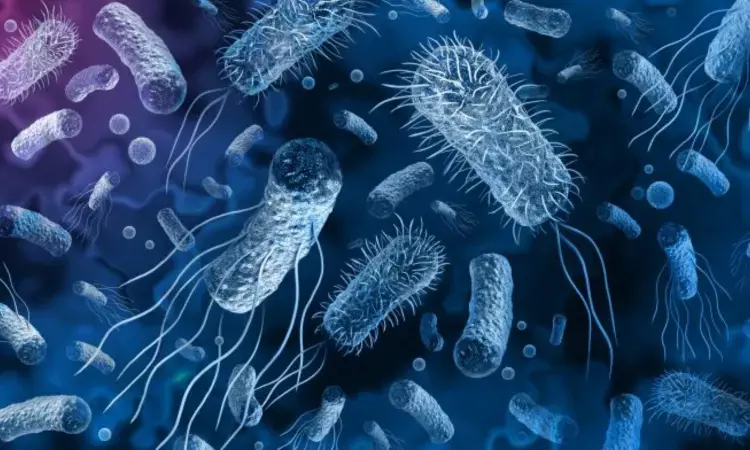- Home
- Medical news & Guidelines
- Anesthesiology
- Cardiology and CTVS
- Critical Care
- Dentistry
- Dermatology
- Diabetes and Endocrinology
- ENT
- Gastroenterology
- Medicine
- Nephrology
- Neurology
- Obstretics-Gynaecology
- Oncology
- Ophthalmology
- Orthopaedics
- Pediatrics-Neonatology
- Psychiatry
- Pulmonology
- Radiology
- Surgery
- Urology
- Laboratory Medicine
- Diet
- Nursing
- Paramedical
- Physiotherapy
- Health news
- Fact Check
- Bone Health Fact Check
- Brain Health Fact Check
- Cancer Related Fact Check
- Child Care Fact Check
- Dental and oral health fact check
- Diabetes and metabolic health fact check
- Diet and Nutrition Fact Check
- Eye and ENT Care Fact Check
- Fitness fact check
- Gut health fact check
- Heart health fact check
- Kidney health fact check
- Medical education fact check
- Men's health fact check
- Respiratory fact check
- Skin and hair care fact check
- Vaccine and Immunization fact check
- Women's health fact check
- AYUSH
- State News
- Andaman and Nicobar Islands
- Andhra Pradesh
- Arunachal Pradesh
- Assam
- Bihar
- Chandigarh
- Chattisgarh
- Dadra and Nagar Haveli
- Daman and Diu
- Delhi
- Goa
- Gujarat
- Haryana
- Himachal Pradesh
- Jammu & Kashmir
- Jharkhand
- Karnataka
- Kerala
- Ladakh
- Lakshadweep
- Madhya Pradesh
- Maharashtra
- Manipur
- Meghalaya
- Mizoram
- Nagaland
- Odisha
- Puducherry
- Punjab
- Rajasthan
- Sikkim
- Tamil Nadu
- Telangana
- Tripura
- Uttar Pradesh
- Uttrakhand
- West Bengal
- Medical Education
- Industry
Applying probiotics may help improve difficult to treat chronic wounds

Millimeter by millimeter, new tissue makes its way through a wound until it has closed a skin lesion. Soon, in the best case, there is nothing left to see of a knee scrape, a finger cut or a burn blister. Not so with chronic wounds, though: If the injury has not healed after four weeks, there is a wound healing disorder. Sometimes, seemingly harmless tissue damage can develop into a permanent health problem or even blood poisoning.
Treatment is particularly difficult because germs that know how to protect themselves perfectly settle here. These bacteria form a biofilm, a stubborn compound of various pus pathogens. For their own protection, they produce a layer of mucus with which they attach themselves to surfaces. Antibiotics or disinfectants reach their limits because they cannot get to the dangerous germs. A team from Empa and the Massachusetts Institute of Technology (MIT) in Boston is currently developing a wound dressing that uses "good" probiotic bacteria to combat biofilms. The researchers recently published a proof of concept in the journal Microbes and Infection.
Tenacious biofilm
The team led by Empa researchers Qun Ren from the Biointerfaces laboratory in St. Gallen used living probiotic bacteria for the new dressing. They are found in healthy intestinal flora and play a major role in the production of foods such as yogurt and cheese. "The used probiotic lactobacilli are biocompatible and create an acidic environment by producing lactic acid," says medical doctor Zhihao Li, who contributed clinical expertise to the project as a visiting scientist at Empa. This, he says, is intended to push the unfavorable, alkaline pH in chronic wounds in the right, i.e. acidic, direction. "In our laboratory experiments, the bactria were able to induce a strongly acidic pH of 4 in the culture medium," Qun Ren said. At the same time, the probiotics promoted the migration of human fibroblasts under the investigated conditions.
Beneficial bacteria
Finally, the beneficial bacteria were integrated into a dressing that protects chronic wounds from further infection. This also allowed the living lactobacilli to produce lactic acid in a protected environment. As desired, the dressing released the acidic product into the environment in a controlled and steady manner. In laboratory tests, the dressing material with integrated probiotics was able to completely remove a typical biofilm of skin pathogens in a culture dish. The question now was: Do the dressing containing beneficial bacteria also pass the test with human skin?
The living bandageMicrobes and Infection
The researchers created artificial wounds with a diameter of two millimeters on small tissue samples and allowed a biofilm of wound pathogen Pseudomonas aeruginosa to grow. In this three-dimensional model of a human skin infection, the probiotics-containing dressing reduced the number of pathogens by 99.999 %. In addition, the researchers were able to prove that the probiotics do not harm human skin cells and triggers the production of inflammatory response of the cells. After this proof of concept, says Qun Ren, further analyses of the mechanism of action will help to exploit the potential of the beneficial bacteria for a "living" dressing.
Reference:
Zhihao Li, Sixuan Zhang, Flavia Zuber, Stefanie Altenried, Ana Jaklenec, Robert Langer, Qun Ren, Topical application of Lactobacilli successfully eradicates Pseudomonas aeruginosa biofilms and promotes wound healing in chronic wounds, Microbes and Infection, https://doi.org/10.1016/j.micinf.2023.105176
Dr Kamal Kant Kohli-MBBS, DTCD- a chest specialist with more than 30 years of practice and a flair for writing clinical articles, Dr Kamal Kant Kohli joined Medical Dialogues as a Chief Editor of Medical News. Besides writing articles, as an editor, he proofreads and verifies all the medical content published on Medical Dialogues including those coming from journals, studies,medical conferences,guidelines etc. Email: drkohli@medicaldialogues.in. Contact no. 011-43720751


